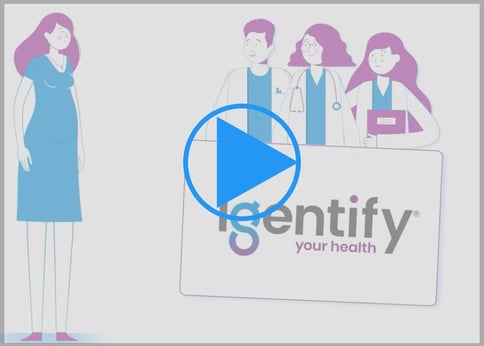Let’s start with some definitions:
Gartner defines customer experience as the customer’s perceptions and related feelings caused by the one-off and cumulative effect of interactions with a company’s employees, systems, channels, or products.
In contrast, user experience encompasses all aspects of the end-users interaction with the company, its services, and its products.
My team works on both, but for this blog post, I’ll focus a bit more broadly on user experience.
Why are customer and user experiences important? A few key reasons:
- Customer-centric companies are 60% more profitable than those that aren’t.
- 70% of consumers say they’re highly likely to purchase exclusively from brands that understand them, and 80% of consumers will pay more for a great customer experience.
- In the US, even when people love a company or product, 59% will walk away after several bad experiences, 17% after just one bad experience.
- Consumers are more likely to share a negative user experience with others: 46.7% of consumers that had a negative user experience or customer experience said they’d share with their friends.
 Photo by Jason Goodman on Unsplash
Photo by Jason Goodman on Unsplash
Lesson #1: Your opinion, while interesting, is irrelevant
When your product (or project) takes up so much of your focus, time, and energy, it begins to feel like a part of your soul. You can become so involved that you forget a key principle:
You are NOT the target audience.
It’s common for company founders to have very strong opinions about final products. However, to truly create exceptional user experiences, you need to bring in the perspective of your users frequently – not only listening to what they say but also watching what they do. At Igentify, we incorporate as many data-driven studies and as much research as we can at the beginning of new product development. We’ve learned the hard way that making changes to a product once it has been designed is much more costly and time-consuming than designing it with the end user in mind from the get-go. To do this, we make extensive use of our Scientific Advisory Board, usability studies, focus groups, A/B testing, and expert testing to design our experiences based on data and qualitative feedback from end-users, not our teammates’ feelings, hunches, or opinions.
Lesson #2: Use a tested methodology
There are many ways to design products with the end-user in mind; for about three years, Igentify has been using a five-step design thinking methodology to understand users, challenge assumptions, redefine problems, and create innovative solutions to prototype and test. The process incorporates the elements pictured below:

We’ve found that using this methodology not only uncovers the actual needs of a user but also encourages solutions that solve the user’s most urgent and pervasive problems. This design thinking methodology encourages us to think more creatively and gives us a blueprint of predictable steps to follow to arrive at the best final products. Yes, it takes more time and resources to follow a detailed methodology with many pieces, but it is worth the time and effort. It is also incredibly cost-efficient (key in a startup) because it helps to surface issues before the product is designed, instead of fixing problems post-production for double (or triple) the cost.
Lesson #3: Use digital multimedia to enhance your final product
Did you know that:
- The human mind absorbs visual information 60,000 times faster than text
- 90% of information transmitted to the brain is visual
- YouTube gets over 14.3 billion visits per month: More than Facebook, Wikipedia, Amazon and Instagram
With so much information being circulated daily, making your message stand out is critical. At Igentify, we aim to change the paradigm of traditional genetic counseling by using digital technologies to educate patients on genetic tests and their genetic results. This is not easy, as there are many medical details and patient care information that we need to get right, all while building trust and acceptance with the end user. We use everything from QR codes to dynamic consent forms to personalized videos in order to improve the user experience. My team spends a lot of time on the personalized videos we create for pre-test education and test results (these videos are used instead of having the patients go see a genetic counselor.) There are many benefits of talking with a medical professional (such as eye contact, empathy, interactivity, etc.) though studies have shown that patients retain only about 49% of the decisions and recommendations made during talks with their provider. The advantages of delivering messages via videos include the ability to re-watch — as many times as is necessary for full comprehension — the ability to share videos easily with family members or friends, and the ability to use visual explanations on top of the verbal ones. While Igentify offers both written genetic test result reports and personalized video results, the overwhelming amount of user feedback is about our videos, with comments like “reading the genetic report was confusing as a layperson. Hearing and seeing the results in the video format made them much easier to understand,” and “I really like how the video simplified the test results because just trying to read a report can be overwhelming.”
An example of an Igentify genetic test video
Lesson #4: Don’t skip refining and improving for new markets
Most companies – including Igentify – must be incredibly cost-conscious. As Igentify started in Israel, we did our initial pilot testing with several sites there, getting lots of great feedback on the look and feel of the characters in our patient videos. When we expanded to new customers in the US, we did not re-test with users there before producing our videos, to save on time and budget. Quickly, it became very clear from user feedback that our characters were not representative of the population we were seeking to serve and lacked diversity. We listened and re-designed our characters (which required quite a bit of design and development time) and are currently awaiting feedback from a focus group on these new characters. This was a great learning opportunity for us, and we now hope to add an additional user testing step into our process in all new geographies.
![]()
Igentify video characters before and after redesign
Lesson #5: Learning about UX and CX never ends
One of the thrilling parts of working in customer or user experience is that there’s always more to learn and new approaches to consider. We are really excited about making each Igentify user engaging, understandable and unique for each patient, from making sure our digital forms are simple and accessible, to our optional comprehension quizzes, to our personalized results videos. Our team just completed a super-interesting session on gamification with an expert in that space, and we are always on the lookout for new research and work methods that we can implement with our team. There are lots of great free courses on Coursera, and active Facebook/LinkedIn groups where the latest practices and articles are shared. I’m so glad I found my way into this career, and I recommend it to others.
To watch more of Igentify’s personalized and dynamic videos created by our team, please visit this page.

